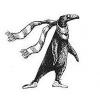Hello all,
I have a Universal Laser VLS 6-60 60w, and have been struggling with a good and reliable method to trace random tools, wrenches, screwdrivers, etc... to cut out Laser foam for special tool cases.
I have tried taking pictures and importing to corel... the trace function picks up shadows, etc. Is there a quick way to do this for a nice tight fit on tools with out re drawing and scaling them all?
thanks in advance.
Sheldon




 Reply With Quote
Reply With Quote







